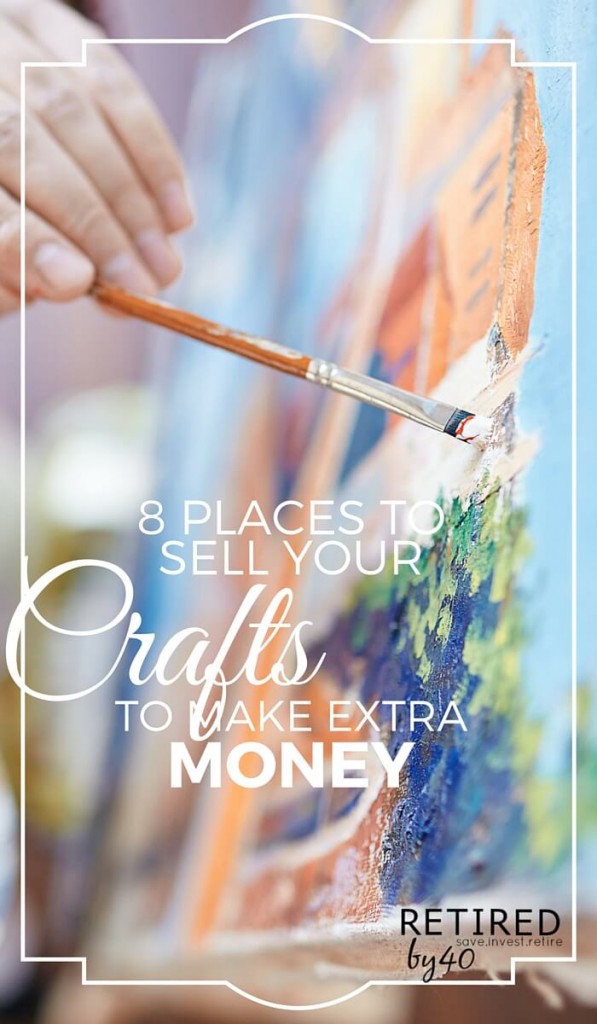The world of crafting, DIY and folk art is blowing up.
Not only are some amazing artisans getting their time in the sun, some very talented people are finally making money with their art, like this lady who earns more than $70,00 a month on Etsy.
If you’re selling crafts on the side, whether to make extra money or purely for fun, doing your research before listing your items on the wrong site will save you valuable time, and make you more money in the long run.
Here are 8 of my favorite places to sell crafts online:
Etsy
By far the best-known site in the world of crafts marketplaces, Etsy accepts both handmade and vintage items – there is truly something for every taste. The site is so large that you can shop by curated lists, locale, or even similar artisans. No matter how you like to shop, or what you like to shop for, Etsy will cater to your preferences. However, Etsy’s fee’s recently increased, and have been deemed unfair by some crafters, other methods of selling are growing rapidly too.

Last year, Pinterest introduced the Buy It Now button, which allows Pinners to buy products without ever leaving Pinterest. Buy It Now pins have enhanced features that display the price (which automatically change when you change the price in your store), but you have to apply for Buy It Now pins and have a Shopify store. However, even with all of the red tape, the average shopper on Pinterest spends more than $186, so gaining approval could definitely be worth the work!
Recently, Instagram shops have been popping up and seeing great success. While the platform is free, some significant hashtag work goes into gaining followers, and you’ll have to set up an actual online store through shopify or your own personal website + a free store plugin like WooCommerce, but if you have awesome crafts and killer photography skills you can really kill it on Instagram.
Folksy
If you’re from the UK and want someplace to sell your handmade items that isn’t Etsy, then Folksy is a great place to start. Your own shop page, secure checkout, simple VAT costs + listing fees, and more make Folksy a low-cost, expanding marketplace. This site is still small (when compared with Etsy, eBay, and others) but they’re growing rapidly.
Zibbet
Zibbet is home to more than 50,000 sellers of unique handmade products, fine art, craft supplies, and vintage items and growing rapidly because of Etsy’s recent policy change that allows manufacturers and resellers into their site. Even better, Zibbet can automatically copy your listing from Etsy with your first 10 listings absolutely free, and low prices on any listings over 10.
Uncommon Goods
Uncommon Goods is less of a marketplace, and more a curated store of handmade products by some amazing crafters, DIY-ers, and artists. If you make high-quality products you can submit your products for their buyers to review. They’ll get back to you in a few weeks with their decision, and they may put your products up for a community vote before deciding whether or not to sell your products. If your items are accepted, Uncommon Goods will sell your products for you and split the earnings with you. One important note: because you’re leaving your marketing to a company that is awesome at it, don’t submit your products unless you’re able to produce them in large quantities. You never know how fast the orders will come in and you’ll need to be able to keep up.

Supermarket
Have great products heavy on design? Pitch them to Supermarket! Products here are carefully curated, so not everyone is accepted, but the pitch is worth your time if your designs are great and produce en masse.
eBay
You might think of eBay as kind of sleazy, but did you know that it actually has a dedicated fair-trade marketplace featuring high-quality products from around the world. Called World of Good, the store specializes in socially and economically responsible products, all of which are backed by eBay.
Once you’ve decided on the right selling platform for you, be thorough when reading through it’s features, fees, and best practices.
With any platform, any good, or item, detailed descriptions, tons of keywords, and filling out all of the requested information is what will get browsers to your shop, and killer photos are key to converting those casual shoppers into actual customers. Then, work to make the buying experience unique and enjoyable for every single customer, which will set you up for long-term success.
Do you sell crafts online? What are your favorite platforms? Share your recommendations with us below in the comments!

P.S. Share this post on Facebook, Pinterest or Twitter, for a change at some pretty awesome prizes!
This post may contain affiliate links. See my disclosures for more information.













Leave a Reply